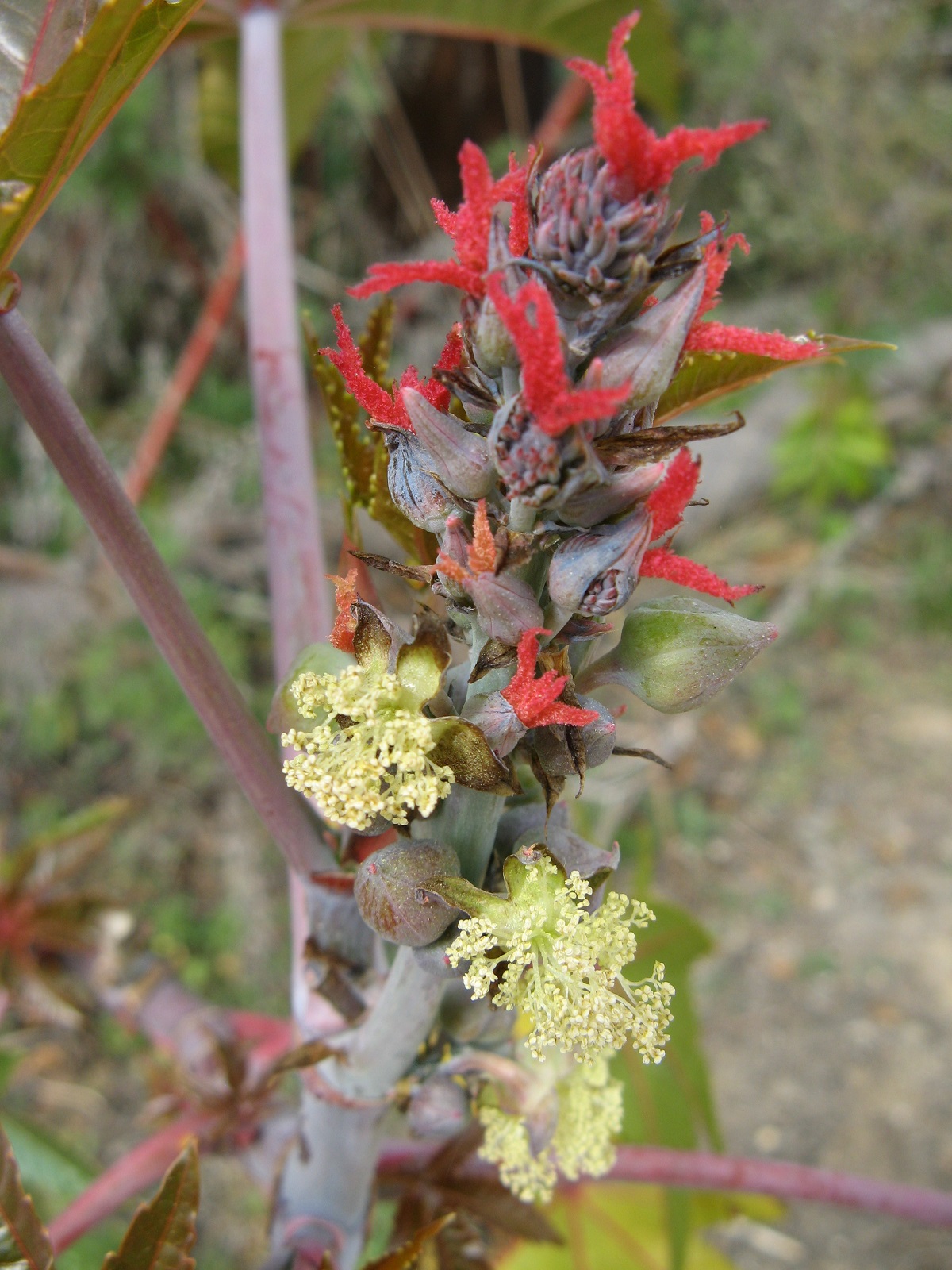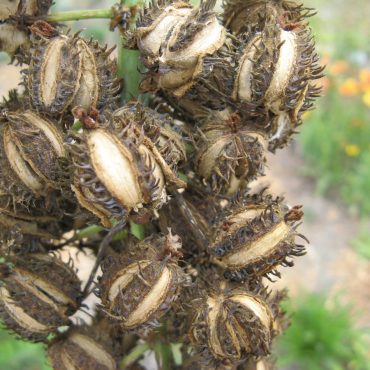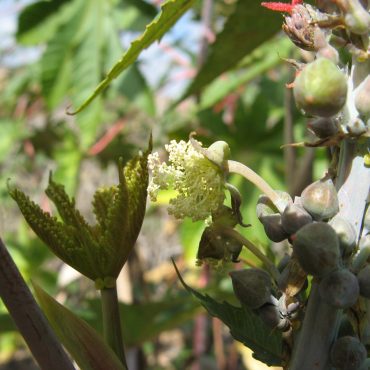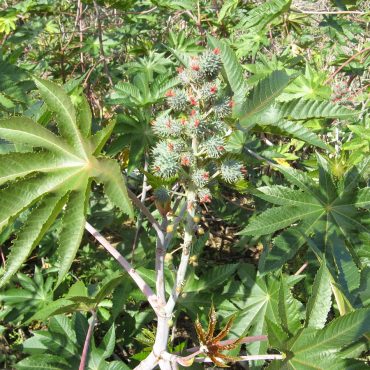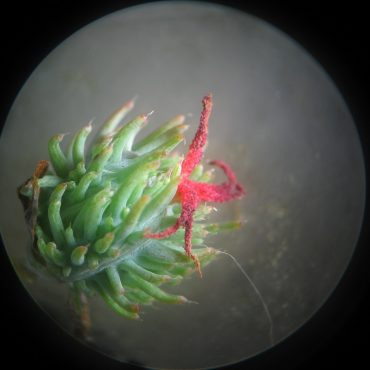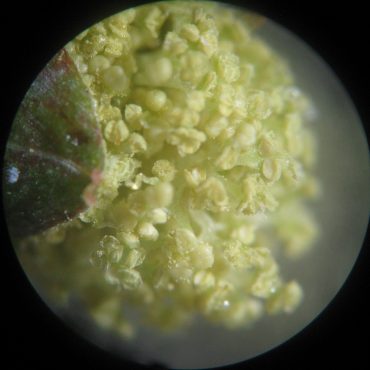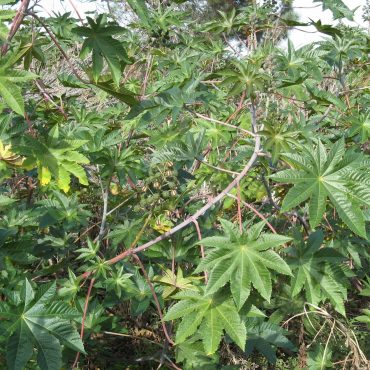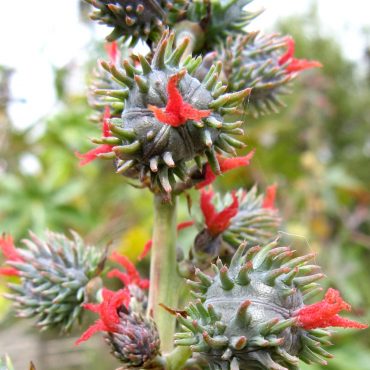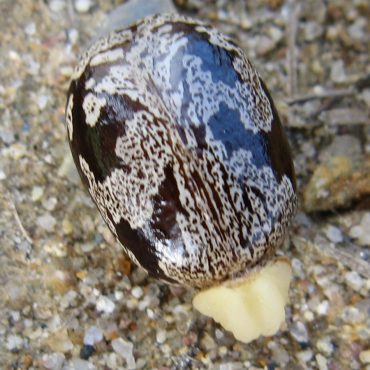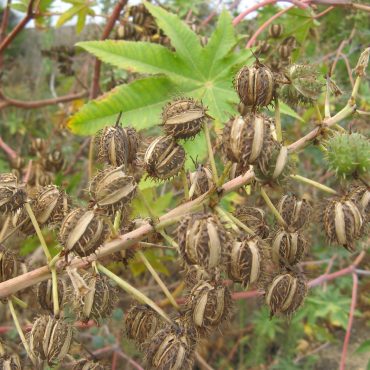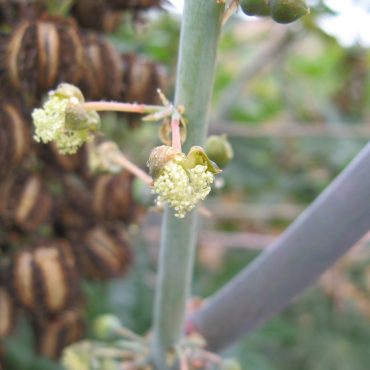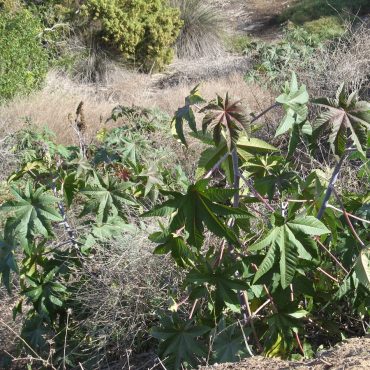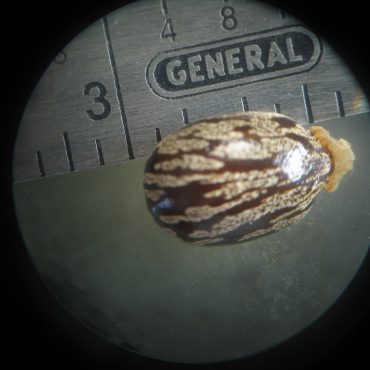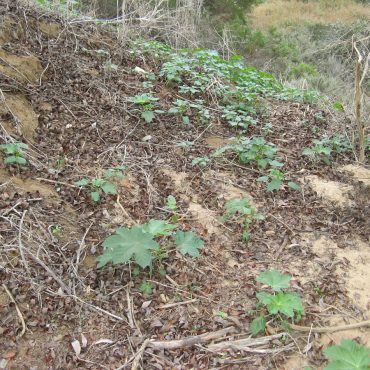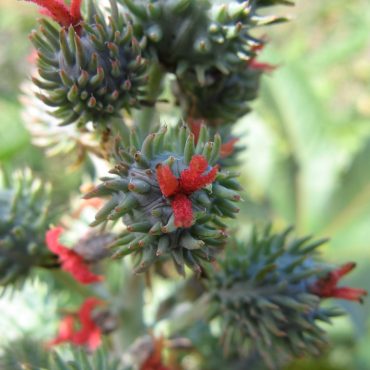Castor bean is a tall, dramatic, perennial shrub. With age, it becomes woody and tree-like, and may exceed 13 feet (4 m) in height. The thick stems are pale, lightly tinged with green or red or purple. The shiny green or bronzed or reddish leaves are alternately attached to the stem and are frequently 12 inches (30 cm) in diameter or larger; leaves are attached to the petiole near the blade center. They are palmately divided into 5 -11 toothed lobes. At the top of the petiole are two rounded nectar glands, that secrete copious ant-attracting nectar.4,11
Flowers are unisexual, but attached to the same clusters of the same plant (plants are monoecious). The terminal clusters are dense and elongated, typically 8 to 18 inches (20 – 45 cm ) long. Female flowers occur above the male flowers. Both male and female flowers lack petals, and both have a greenish calyx with 3 to 5 lobes. Beyond that they are quite different from one another. The female flower has a single pistil and a superior, three chambered ovary covered with greenish to purplish finger-like, sharp pointed projections. There are three styles, forked above midpoint, pale orange when young, aging to red. Styles are densely covered with minute projections, which give them a furry look. The male flower is about 1/2 inch wide, with numerous cream-colored stamens in branched clusters of about twenty. Anthers are sub-spheroidal. A large amount of wind-born pollen is shed. Flowers are present most or all of the year.7 They are generally described as non-showy, but that is debatable.
Mature fruits are are dry, three-lobed capsules, covered with the projections, which have hardened into sharp prickles. Capsules are about one inch (2.5 cm) in diameter, including prickles. There are three chambers, each with one seed. When dry, the capsule splits open, releasing shiny, ovoid seeds that are intricately mottled in brown and tan, approximately one-half to nearly one inch long. At one end is a fleshy projection (a caruncle or elaiosome), which is eaten by ants. Seeds are quite attractive, but contain ricin, a deadly poison.

